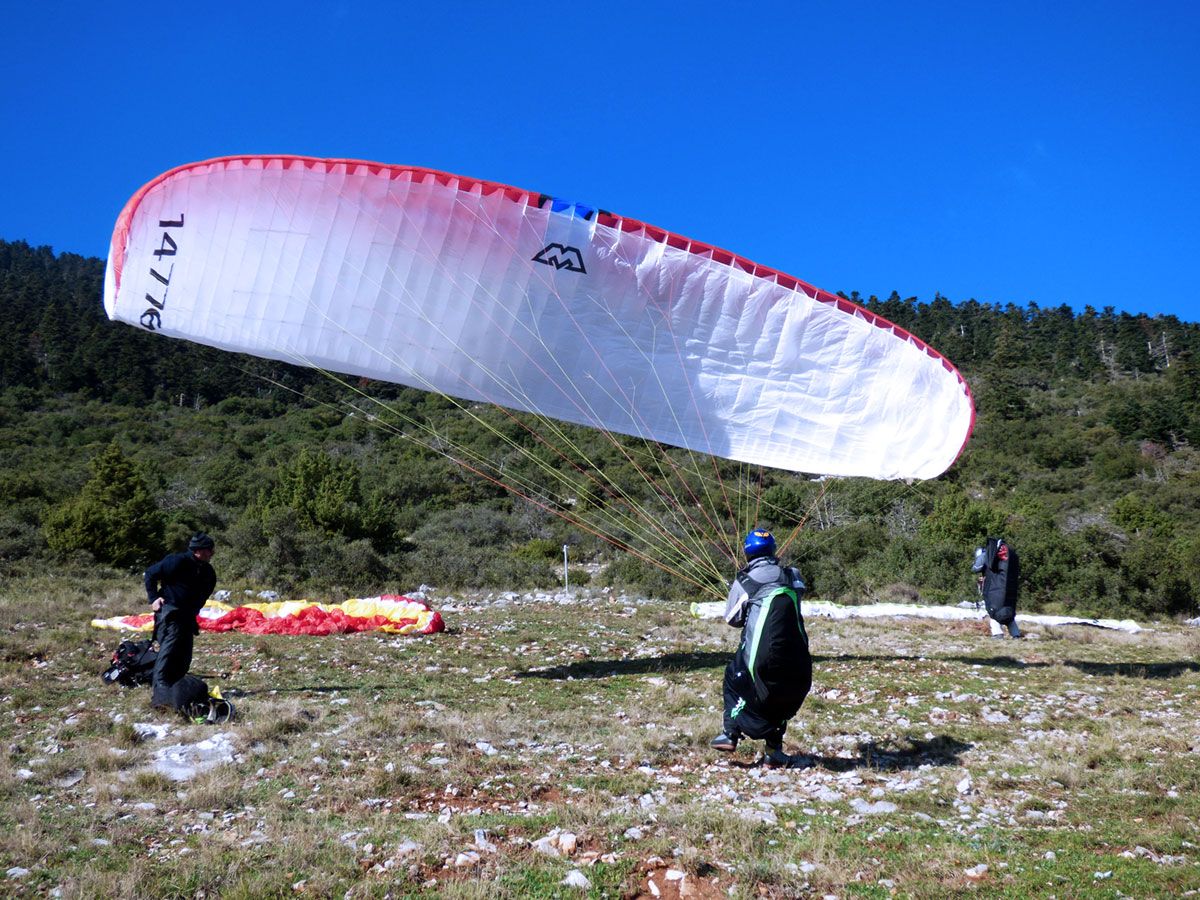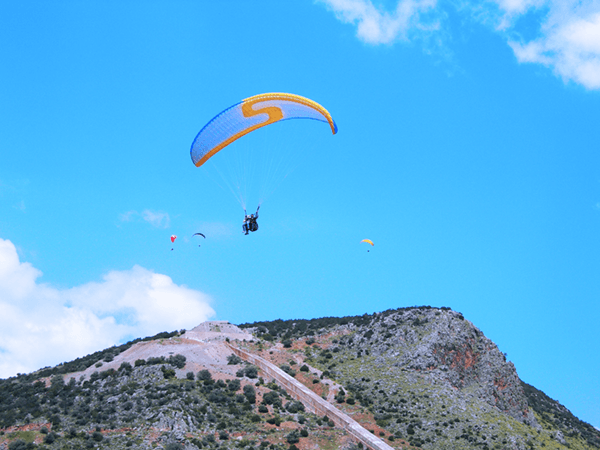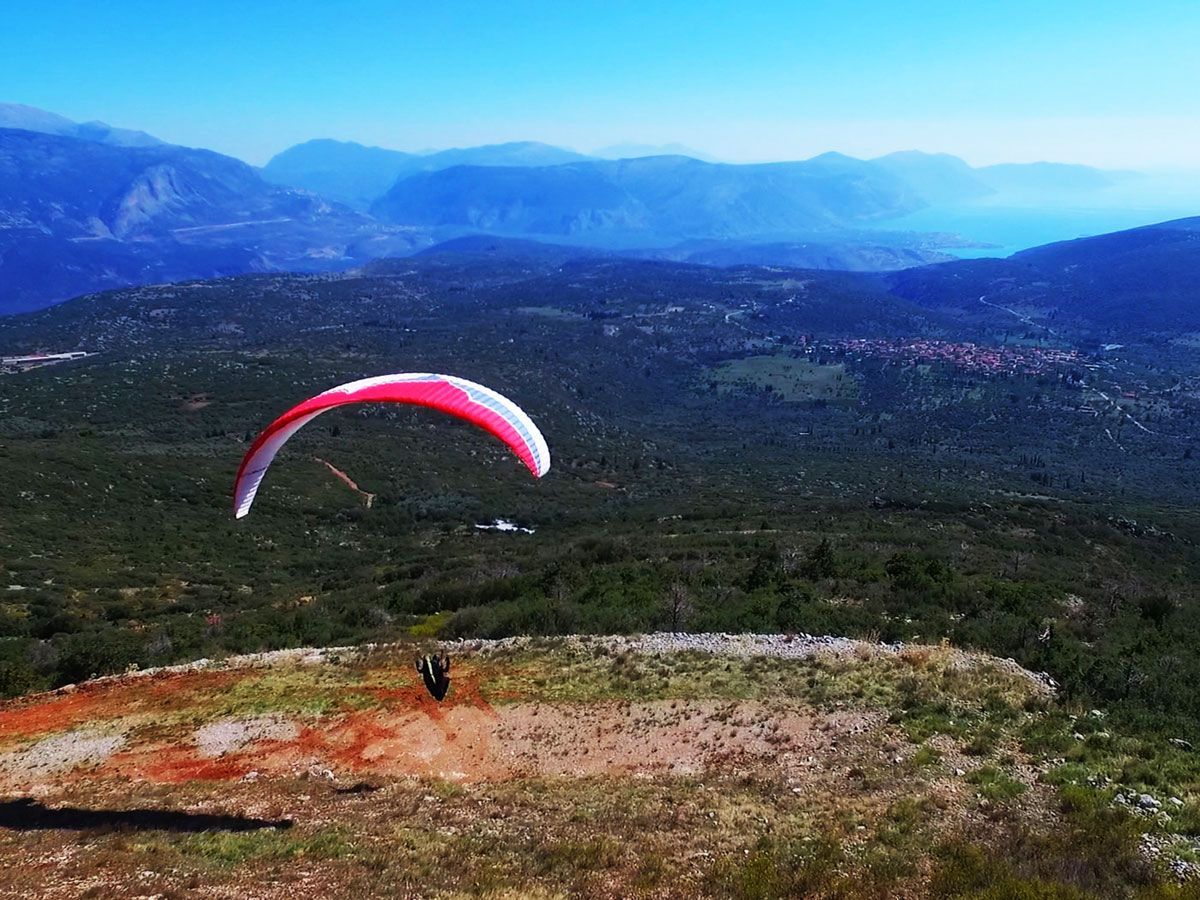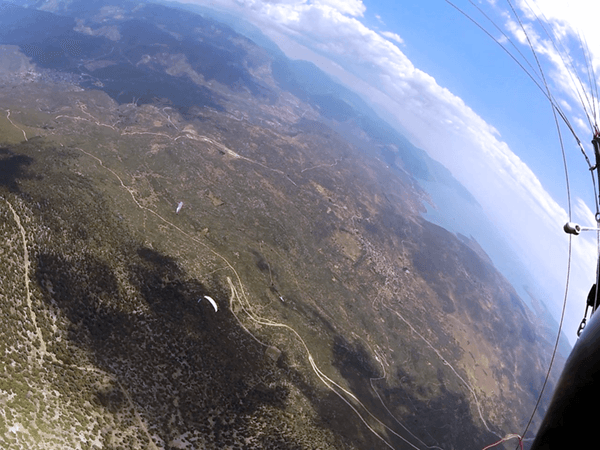Training with Safety
The Basic School

Ground Exercises

First Flights from very low heights

Flying Higher
When you have built the confidence of taking off from very low heights and you are able to land safely then is time to fly higher. With the help of a two-way radio the instructor will guide you at take off and to safely land after a 100 to 300m high flight. You repeat the same process until the instructor thinks that you have the ability to do it by yourself without anyone’s help. This takes around 15 flights.

Second Level - Dynamic and Thermal Flights
Once you have the ability to take off and land safely in different wind speeds, then it is time to learn to fly using dynamic and thermal lift. In this way, you will be able to gain height, fly higher than the take off and even to get to the clouds. You learn to imitate the birds, circling in a rising thermal current of air or in air rising before buildings or slopes. This school it takes 7 days of theory and flights.

SIV and Active Piloting
With an SIV course, pilots realize how their glider reacts when it collapses and how to react correctly and in time to solve such kind of problems when they occur. This done by flying over water causing different kind of collapses according the radioed orders of the instructor and reacting accordingly. In this way, the pilot stops fearing collapses since he has realized that even collapses of up to 75% or even a full stall can be recovered promptly and safely.
To know how your glider behaves when collapsing and how you have to react is a very important knowledge, but most important is to avoid such collapses before they occur. To manage this, you have to develop the ability to understand the information from the canopy coming through the risers and harness enabling a pilot to predict what is happening to the canopy. The most important exercise that will teach you that is called “wingover”. Generally, we call this process “active piloting” and pilots who have developed this are able to fly much safer than before and to fly gliders of higher performance with more demanding characteristics.


